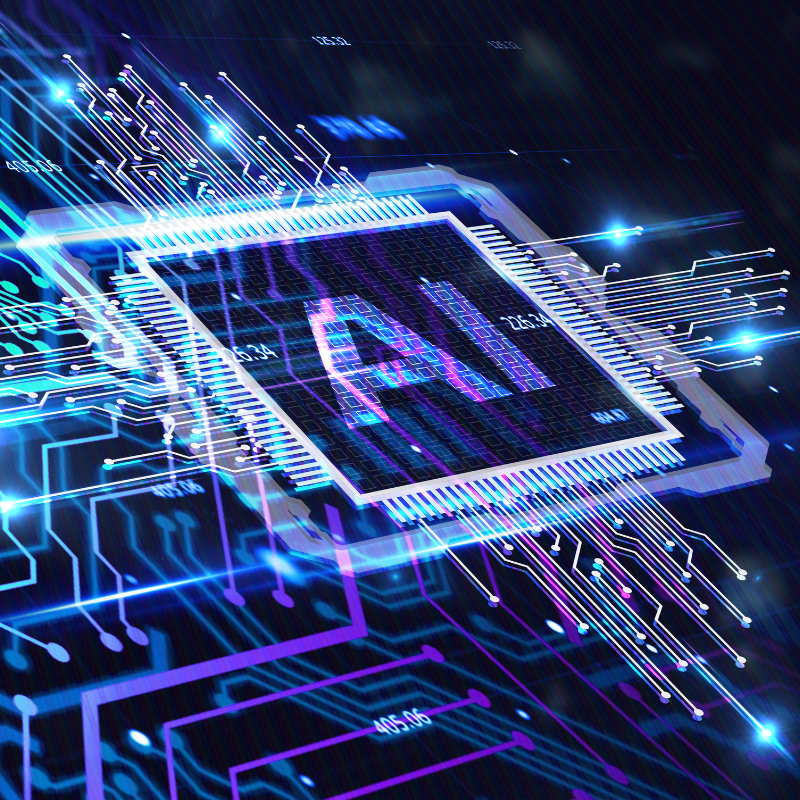Whether you manufacture smartphone cameras or machine parts, all products follow a similar lifecycle. Understanding and managing the product lifecycle effectively is crucial for optimizing efficiency, reducing costs and staying competitive. Product Lifecycle Management (PLM) is a structured approach that guides a product from conception to end-of-life, influencing business processes, market strategy and long-term success.
Product Lifecycle Management Stages
As AI revolutionizes the manufacturing industry, its (responsible) integration into PLM is proving to be a game-changer. By integrating AI into each of the five steps of PLM, manufacturers can optimize operations, improve product quality and streamline processes. Let’s take a look at how AI is transforming each phase:
1. Conception
The first stage of the product lifecycle involves brainstorming and idea generation, where manufacturers analyze customer needs and market trends to develop innovative products. AI-driven generative design tools accelerate this process by analyzing constraints and requirements to generate optimal design solutions. These tools can propose thousands of design variations, allowing engineers to explore options that maximize sustainability, performance and cost efficiency.
2. Design
Engineering teams rely on advanced tools to create 3D models and simulations, ensuring products are functional and durable. AI-powered simulation and optimization tools enhance this phase by predicting performance outcomes and identifying potential failures. It also automates complex calculations, enabling faster iterations and reducing development time.
Before moving to full production, manufacturers must ensure designs are optimized for their specific manufacturing capabilities. Digital twin technology enhances Design for Manufacturing (“DFM”) by creating virtual replicas of production systems that can simulate manufacturing processes with high fidelity. By running virtual production simulations using these digital twins, engineers can identify potential manufacturing challenges, optimize designs for producibility, and validate that products can be manufactured at target quality and cost levels before committing to physical production. This digital bridge between design and production significantly reduces costly design revisions, tooling modifications, and production delays.
3. Production
Once a design is finalized, manufacturers move into production – sourcing components, setting up assembly lines and implementing quality control measures. AI enhances this stage by streamlining production scheduling, optimizing resource allocation and identifying inefficiencies. Digital Twins of production lines, equipment and facilities provide manufacturers with comprehensive real-time visibility into operations. These virtual replicas collect data from IoT sensors on physical assets to mirror the actual manufacturing environment, enabling constant monitoring, performance analysis and process optimization. Manufacturers can identify improvements with minimal risk and downtime by running simulations on the digital twin before implementing changes to the physical system.
In a more traditional approach, AI-driven quality control systems leverage machine learning algorithms to analyze real-time data from production lines, detecting defects before they become costly issues.
Predictive maintenance is another key AI application, where machine learning models analyze equipment performance data to foresee breakdowns before they occur. This reduces downtime, extends the equipment’s lifespan and minimizes maintenance costs.
4. Distribution and Sales
Demand forecasting powered by AI helps manufacturers anticipate market trends, ensuring production aligns with customer needs. Modern supply chain optimization tools improve logistics efficiency, reducing delays and costs. In addition, AI enhances the customer experience by personalizing marketing strategies, recommending products, and improving post-sales support.
5. End-of-Life
As products reach the end of their lifecycle, AI facilitates responsible disposal, recycling or repurposing. AI-driven analytics assess material recovery potential, helping manufacturers develop circular economy strategies that minimize waste and maximize value. By integrating AI, companies can implement smarter reverse logistics and sustainability initiatives, reducing environmental impact and complying with regulations.
Integrating AI into PLM is essential for modern manufacturing. From ideation to end-of-life, AI enhances every phase of the product journey, making manufacturing smarter, more agile and more sustainable. Manufacturers can ensure long-term success in an increasingly competitive and demanding market by adopting AI-driven PLM solutions.
For additional insights, check out our article on 3 Mistakes Manufacturers Make with AI and How to Avoid Them.
Contact Us
Our team of AI experts is here to help. Get in touch with our Manufacturing, Distribution and Logistics Services Team to develop a tailored strategy, roadmap and implementation plan that aligns with your manufacturing business’ goals.






